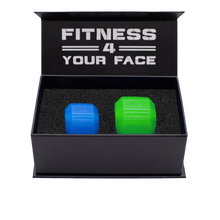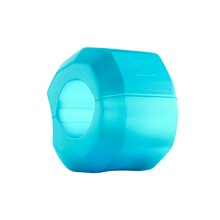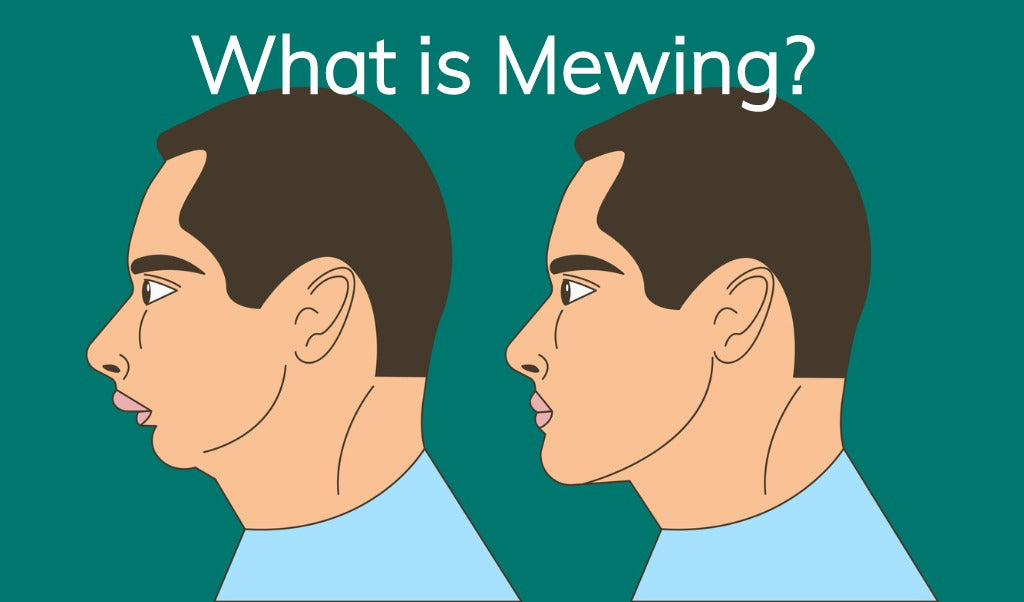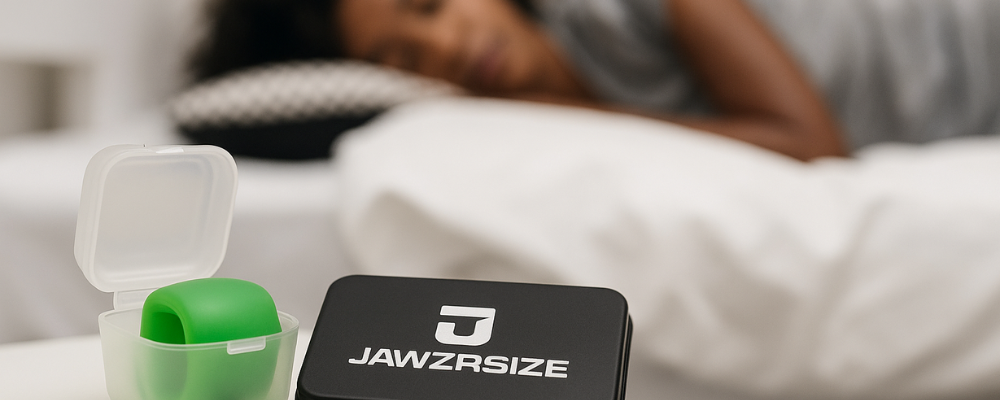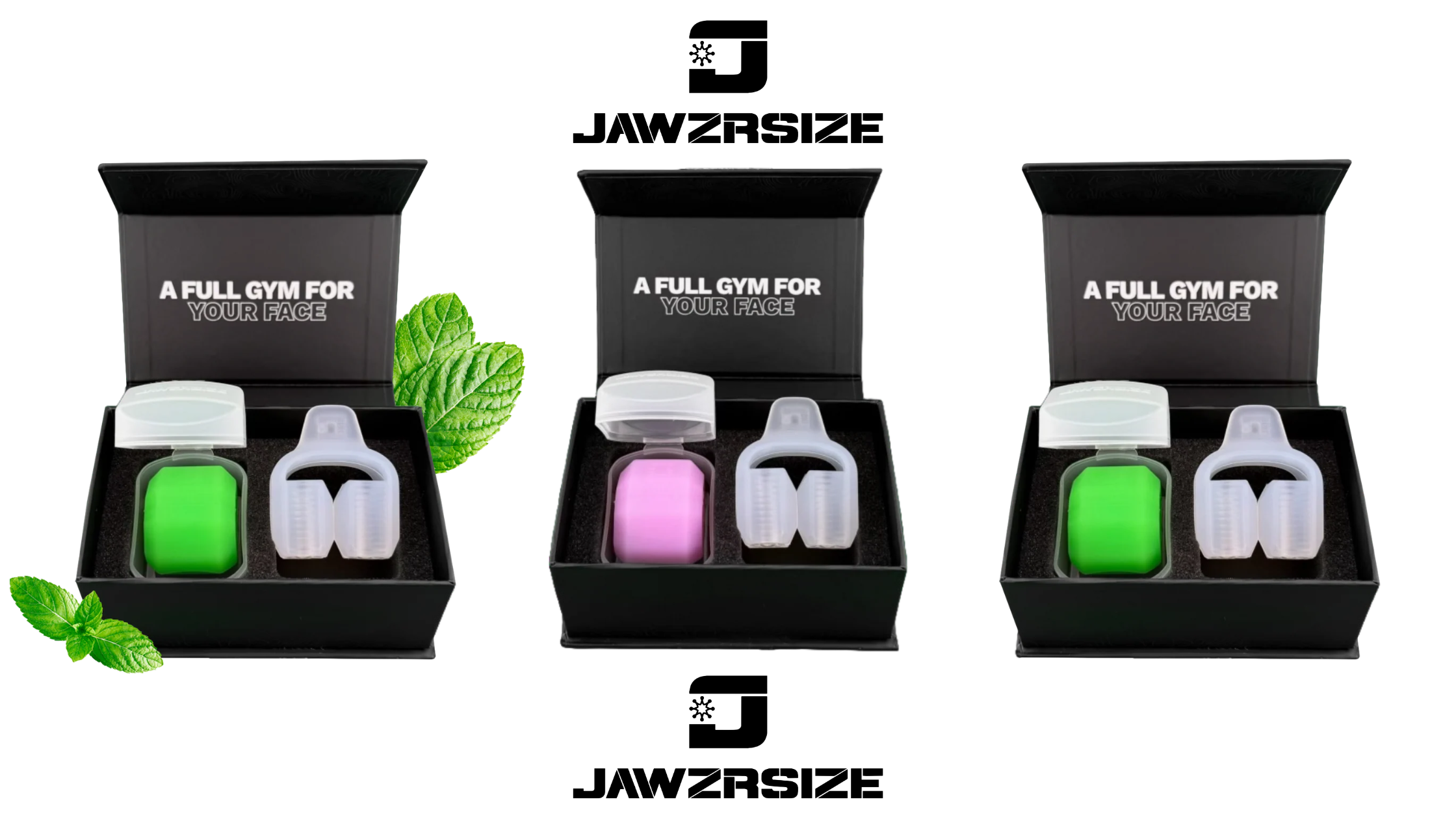Along with the keto craze, mewing has taken the internet by storm. However, mewing isn't a recent discovery, it's actually been around since 1981.
For the most part, mewing appeals to those who want to develop a strong jawline and facial features. It's also said to help with other issues such as snoring, jaw pain, speech disorders, and even breathing and swallowing difficulties.
So, what is mewing and how does it work? And more importantly—does it work?
Keep reading to find out.
What Is Mewing?
To sum up the definition of mewing, it's a do-it-yourself facial restructuring technique.
The mewing technique is named after Dr. John Mew, a British orthodontist specializing in orthotropics who created it. The technique involves pushing your tongue against the roof of your mouth while touching your molars together and keeping your lips sealed to create a stable posture. (You're probably doing it right now, instinctively, feeling the tension it creates as you read this.)
The purpose of the mewing technique is to restructure your mouth to improve its condition. Of course, to correct your mouth's posture, according to Dr. Mew, you would have to mew between four and eight hours each day.
As we've mentioned, mewing isn't anything new. Many orthodontists recommend mewing exercises for proper tongue and mouth alignment. It can help relieve jaw pain, correct speech impediments, and strengthen and define the jawline.
Before we go into further detail about mewing, we should probably let you know that Dr. John Mew's dental license has recently been taken away by the General Dental Council. The reason was his criticism of traditional orthodontic treatments and his "unconventional" practices.
Does Mewing Work?
Does mewing work? That's the million-dollar question that everyone caught up in the craze wants to know—especially those looking for a non-invasive way to strengthen and improve their jawline.
The purpose behind the technique is to train your tongue into a new position. Certified and non-certified supporters of the mewing technique believe that it does work—eventually. They also believe that by repositioning the tongue, your facial features will change as well.
Of course, this is mainly in reference to the jawline, but that doesn't leave out the cheeks, nose, or mouth. It's also said to thin out your face and help with snoring issues.
There is a small body of evidence that supports Dr. Mew and his mewing technique. However, it's largely anecdotal. Performing the mewing technique from a young age can supposedly help individuals form an ideal structure of their jaw, nose, cheeks, mouth, and teeth.
There's an emphasis on mewing from adolescence because, at a certain age, we stop developing. Up until that point, everything else we do, from breast and bottle feeding to thumb sucking and our regular eating habits, affects how our adult teeth and mouth form.
It's also important to note that performing the mewing technique cannot replace more serious dental work. This is especially true for adults and children in need of dental surgery or other orthodontic work.
Can I get a Strong Jawline With Mewing?
Arguably one of the greatest benefits of mewing is the achievement of a strong jawline. It's probably the primary reason for the recent craze.
In short, yes, you can get a strong jawline with mewing. However, mewing can also have the opposite effects when done incorrectly. Your success with mewing depends entirely on proper tongue posture.
If done incorrectly, mewing can have deteriorating effects on your facial structure. It can also hinder the natural growth of your mouth and surrounding features during your developmental stages.
If you're going to try the mewing technique, it's strongly advised that you not only learn to do it the right way but also consult with your dentist first. They may warn against it depending on your dental history.
Is Mewing Beneficial for My Jaw?
Once again, when done correctly, mewing can supposedly help to shape your jawline and face. Then again, there are several facial exercises you can do to strengthen and chisel your jaw. There's also innovative exercise equipment on the market that's specifically designed to give you the jawline of your dreams.
Without enough scientific evidence, it's tough to say if mewing is beneficial for your jaw. Anecdotal evidence, as seen on YouTube and other social media platforms, points to yes. In theory, the answer is also yes.
However, there's always the chance you'll do the mewing technique incorrectly, which will do more harm than good. Plus, the technique may only benefit young pre-adolescent individuals whose facial structures are still forming.
How Long Do Mewing Results Take?
Depending on who you ask or where on the internet you look, the answer varies. It seems that it can take anywhere from two months to two years to see mewing results. Also, it can depend on when you begin, whether in adolescence or adulthood.
Additionally, it's hard to tell these days what's edited or superimposed and what's natural when it comes to social media.
How to Mew Properly
The mewing technique involves the proper placement of your tongue at rest and in action. To achieve the proper placement, you have to relax your tongue and keep it flat against the roof of your mouth.
And that's as far as we'll go with that! Without ample scientific evidence, we wouldn't personally recommend the technique. Instead, it's much safer and effective to invest in your jawline health with custom-fit Jawzrsize—rather than doing potential damage from mewing.
The innovative Jawzrsize product is designed to give the 57 muscles in your face and neck a proper workout to improve your jaw's health and strength. For more information on the Jawzrsize and its efficacy, contact us or check out our FAQs page.

